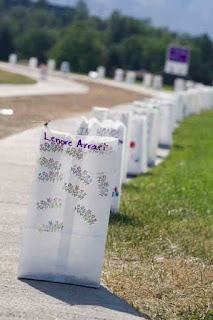Once again I find that I have been so busy, that I haven’t been keeping up with my blog. So I am here to remedy that. First things, you may be wondering what I have been up to that has been keeping me so busy. For starter, I still continue to focus on event photography, which means every weekend I have been out and about. As I have said before, I enjoy capturing the moment and the most recent moments include
Day Out with Thomas at the
Colorado Railroad Museum
 Race for the Cure
Race for the Cure
 K9 for the Cure
K9 for the Cure

K9 for the Cure was an amazing event and if you checked the link I put in above, you'll notice that my picture was published on their webiste. Yep, without me, it's just aweso.


And a little bit of the World Series (just the outside because like I would be able to get a ticket)


Oh yeah, and from a while back, I also attened the Member Education and Training Seminar for the Rocky Mountain District Circle K International, for which I am an Assistant Administrator. At this event I shot mostly Holga, which if I do say, came out very well. I mean, it is Holga. For this particular one, I did a "holgarama" which is not completely advancing the film so that each frame overlaps the next.

And besides all of that I have been fairly busy with some portraits as well as beginning work on putting together a nice and presentable portfolio.
Putting together a portfolio has been both immensely fun and infuriating at the same time. Both of these options are generated by the shear number of options available, which I had not really considered fully before. For starters, the cover of your portfolio should be representative of your work; nice clean product and advertising would be complimented by one of
Lost Luggage’s Looking Glass covers or perhaps
Pina Zangaro’s Satin Finish Aluminum Machina covers. But what cover identifies “event” or even photo documentary, which is an aspect of what I focus on, though I do need to go into further depth at times. I had seriously spent most of my time focusing on paper: do I go with a nice
Innova paper (because I really like their Fiber semi gloss warm tone), or maybe with a
Hahnemuhle photo rag? Texture, brightness, sheen: it’s all very complicated, but as I said it’s exciting to rifle through all of the different papers, some smell exactly like the darkroom while others feel safe and comfortable like a familiar memory. Of course, there are papers that I just want to try out, like
Moab’s moenkopi Japanese Washi and
Booksmart’s Fine Art Metals. Of course, I currently don’t have any images that would be complemented by either Japanese Washi or gold, but soon.
So while I contemplate, I’ll leave you with a little bit extra. Jay Kinghorn will again be presenting, this time at the
Colorado History Museum in the Boettcher Auditorium, November 8, 2007. I’m hoping to attend if my schedule allows, and I would encourage you to attend too.
Have safe and happy Halloween!




























 The last event was the
The last event was the 




















